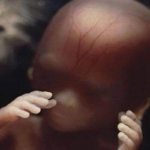Blog Post
The truth about late-term abortion
Way back in 2013, when a few pro-life politicians were valiantly attempting to get Canadian parliament to discuss the revelations that babies were born alive and left to die after abortions, I wrote a column for the National Post titled “The rarity of late-term abortions are not an argument in their favor.” In response to horror stories about late-term abortions, abortion activists argued (and still argue) that these procedures were 1) rare, 2) always “necessary” for poorly-defined health reasons or the likely death of the child due to a medical condition, or 3) who cares—abortion should always be legal. The final argument is generally only offered when pro-lifers have dispensed with the first two arguments, and gets to the crux of the issue: Abortion activists believe in the unbridled right to kill a baby before birth, full stop.
As the heartbreaking revelations about babies born alive and left to die after abortions indicated, abortion activists are also generally willing to look the other way when the attempted killing of late-term children results in infanticide, as well.
But there’s another important point to be made here, as well. Most late-term abortions are not performed for medical reasons. Most, in fact, are performed for the same reasons that the majority of other abortions are: Because the parents or parent do not want the child. Kelsey Hazzard of Secular Pro-Life has a good article over at Live Action highlighting this point once again:
Mother Jones, a left-leaning outlet hostile to the lives of children in the womb, recently published an article about abortions after 15 weeks, sometimes called “late-term” abortions. A Mississippi law protecting children 15 weeks and older from abortion will come before the Supreme Court in the fall.
Author Becca Andrews criticizes her fellow abortion advocates’ approach:
You’re familiar with the milieu, which goes something like this: Abortions after 15 weeks are rare, and these are heartbreaking cases where the pregnancy was wanted and something went horribly wrong.
But the reality is, these are simply medical procedures given to those who need them. As Laurie Bertram Roberts, who runs the Mississippi Reproductive Freedom Fund, puts it, the seemingly arbitrary 15-week mark “was right there where people start getting a little bit like, ‘Well, why would someone need an abortion that late?’”
The reasons why people get them are often not all that different from “early-term” ones . . .
Thanks. We’ve only been saying this for years. The pro-life claim that second- and third-trimester abortions are happening for non-medical reasons — i.e., elective abortions for socioeconomic reasons or as birth control — is well-supported by the data, including data coming from pro-abortion sources like the Guttmacher Institute.
A pro-abortion author can’t simply write the truth and leave it at that, of course. Andrews pivots to blaming pro-life laws for late-term abortions, suggesting that women could kill their babies earlier in pregnancy if only those mean anti-choicers didn’t make it so inconvenient. Puzzlingly, however, Andrews tries to illustrate her argument with the story of Jessy Rosales, who got pregnant in California (“a state that’s considered to be a bastion for abortion access”) and whose abortion at 16 or 18 weeks had nothing at all to do with pro-life legislation.
The way Rosales speaks about her child’s conception and death is frankly infuriating.
When she was 20 years old, she needed an abortion. At the time, she was a student at UC Riverside, where she led a campus reproductive justice advocacy group—she was quite aware of what was happening to her body and familiar with what needed to be done. . . .
“It absolutely blew my mind, she remembers. “What the f*** is this about? I’m going to get this thing out of me; time’s a-tickin’ and things are growing.”
Let us be clear. Jessy Rosales did not “need” to kill a “thing.” She chose to kill a child. At 16 weeks (4 months, pictured below), Jessy Rosales’ baby was five and a half inches long with an obviously human appearance Internally, the baby’s organs were well established, bronchioles and respiratory sacs appeared in the lungs, and enamel was forming on their teeth. If Jessy was carrying a daughter, the baby had a uterus and fallopian tubes of her own. Of course, that did not save her from “reproductive justice” in the form of dismemberment by medical instruments.
You can decry the “stigma” of late-term abortion all you like. Some things deserve to be stigmatized — and made illegal.
We can drop the pretence: Abortion activists want feticide to be legal at any point in pregnancy, for any reason, regardless of the brutality inherent to the process of crushing and killing the child. We shouldn’t let them get away with arguing otherwise.
Oh, and if anyone wants to know what late-term abortion actually is, watch this video:








